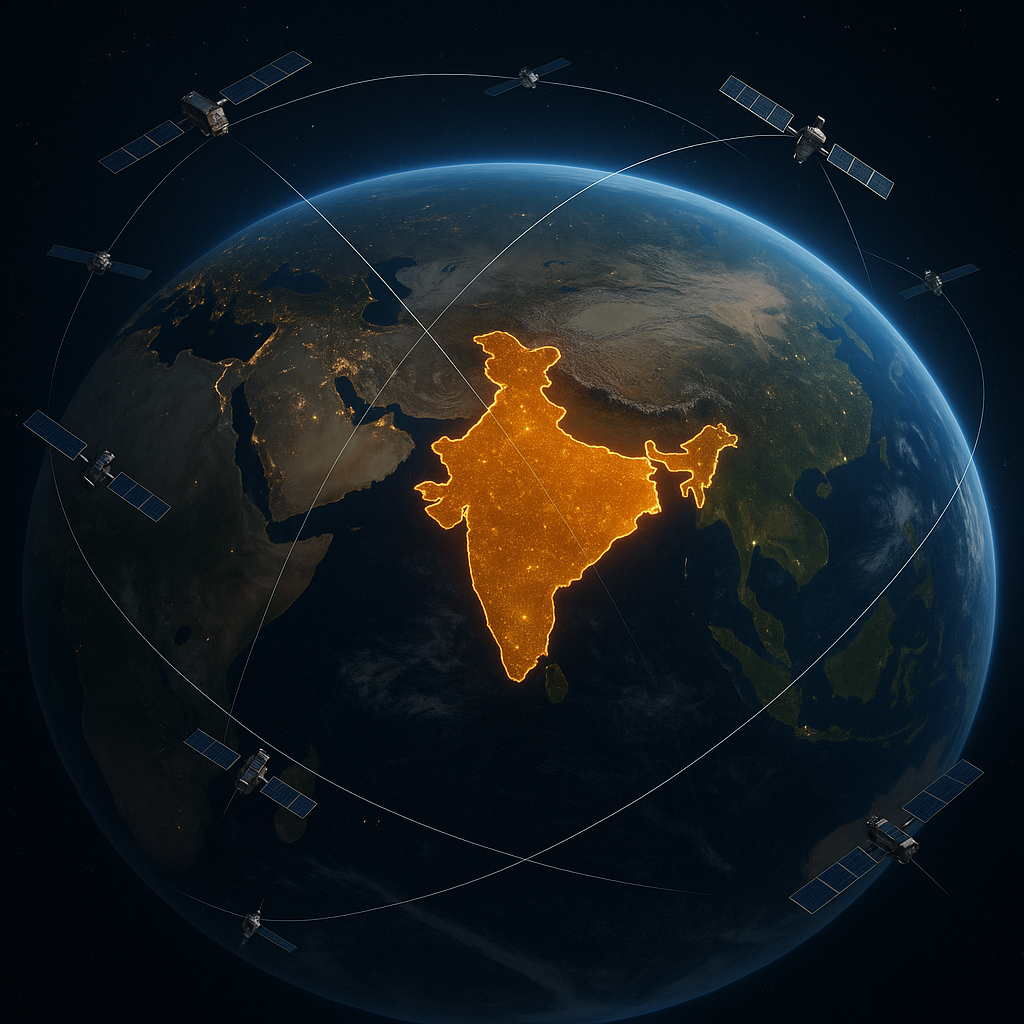
- IN-SPACe has selected a private consortium led by Bengaluru-based Pixel, along with Pier Sight Space, Sat Sure Analytics India, and Dhruva Space, to design, build, and operate India’s first fully indigenous Earth Observation (EO) satellite constellation under a PPP model.
- The consortium made a zero-rupee bid, choosing to fully self-fund the ₹1,200 crore project while declining up to ₹350 crore of available government support, marking a bold shift in India’s space financing model.
- The constellation is projected to exceed ₹1,800 crore annually in cost but could save India about ₹9,000 crore over five years compared to imported EO data, while reinforcing ecosystem synergy and supporting data sovereignty under the Made-in-India program.
In a landmark development for the Indian space ecosystem, the Indian National Space Promotion and Authorization Centre (IN-SPACe) has selected a private associates consortium led by Bengaluru-based Pixel, including Pier Sight Space, Sat Sure Analytics India, and Dhruva Space to design, build, and operate India’s first fully indigenous Earth Observation (EO) satellite constellation under a public-private partnership (PPP) model. This project marks a major shift in India’s space policy.
What sets this initiative apart is the zero-rupee bid, meaning they will fully self-fund the ₹1,200 crore project. Although up to ₹350 crore of government support was available under the PPP framework, the consortium has declined it. IN-SPACe Chairman Pawan Goenka praised the move, emphasising the private sector’s confidence in the long-term commercial and strategic partnership and growth.
This bold financial strategy flips the traditional engagement model, where the government funds costs, on its head. Instead, the consortium assumes full financial risk with hopes of recovering investment through the commercial sale of EO data and services to government agencies, domestic industries, or international clients.
This 12-satellite constellation will be developed over the next four to five years. These satellites will be equipped with a range of sensors-panchromatic, multispectral, hyperspectral and Synthetic Aperture Radar (SAR)-enabling comprehensive, all-weather, day-and-night Earth monitoring. This constellation promises to deliver timely, high-resolution, sovereign EO data for multiple domains: climate monitoring, disaster management, precision agriculture, urban planning, water resource monitoring, marine surveillance, and national security. Crucially, it contributes to data sovereignty, reducing reliance on foreign satellite data and supporting India’s broader ambitions under the PPP and Make in India programs.
A 12-satellite constellation equipped with panchromatic, multispectral, hyperspectral, and SAR sensors will be developed over four to five years, providing all-weather, day-and-night Earth monitoring.
For the first time, a purely private Indian consortium (company team) is participating in a national EO infrastructure project, from building to operation. The government is acting now as an enabler, not an operator; IN-SPACe plays a facilitating and regulatory role rather than executing the project alone. It is now responsible for providing policy, regulatory alignment, and certification. This initiative signals India’s readiness to develop and operate sovereign spatial infrastructure, with all satellites manufactured domestically and expected to be launched on Indian launch vehicles.
Ecosystem synergy is also a key element in this joint venture, combining the complementary strengths of four space-tech firms, manufacturing, analytics, radar imaging, and satellite platforms, thus reinforcing India’s private EO ecosystem. This will deliver a positive and strong message to the world and will be helpful for the Indian economy.
For the first time, a purely private Indian consortium is participating in a national EO infrastructure project, from building to operation, with the government acting as an enabler through IN-SPACe’s policy, regulatory, and certification role.
The first satellite is expected to be launched within two years, followed by phased rollouts to reach full constellation deployment by around 2028–29. The projected cost, as per IN-SPACe estimates, could exceed ₹1,800 crore annually, potentially saving India about ₹9,000 crore over five years compared to imported EO data. If successful, this could catalyse further private-sector-led space missions in India, propelling both manufacturing plus launch services and data analytics plus applications segments.
India’s first private PPP-led EO satellite constellation represents domestic ownership of space infrastructure, underlined by bold financial commitment and technological collaboration. It enhances the Made-in-India program and conveys the clear message that Indian private space firms are ready to go big, build big, launch big, and commercially operate a sovereign satellite infrastructure. This venture sharply redefines the power of the nation in space governance and sets the stage for India’s private space era to come.
Reference:
- https://www.reuters.com/world/india/indias-space-regulator-picks-google-backed-pixxelspace-home-grown-satellite-2025-08-12/?utm_source=chatgpt.com
- https://timesofindia.indiatimes.com/india/bid-that-bagged-the-12-earth-observation-satellites-ppp-project-quoted-rs-0/articleshow/123291019.cms?utm_source=chatgpt.com
- https://timesofindia.indiatimes.com/city/ahmedabad/ahmedabad-spacetech-firm-joins-consortium-for-indigenous-satellites/articleshow/123266013.cms?utm_source=chatgpt.com
Samarth Tripathi holds a B.Sc. in Mathematics from Saint Gahira Guru University, Ambikapur, and a B.Ed. He has a strong interest in defence journalism, national security, and geopolitics.
